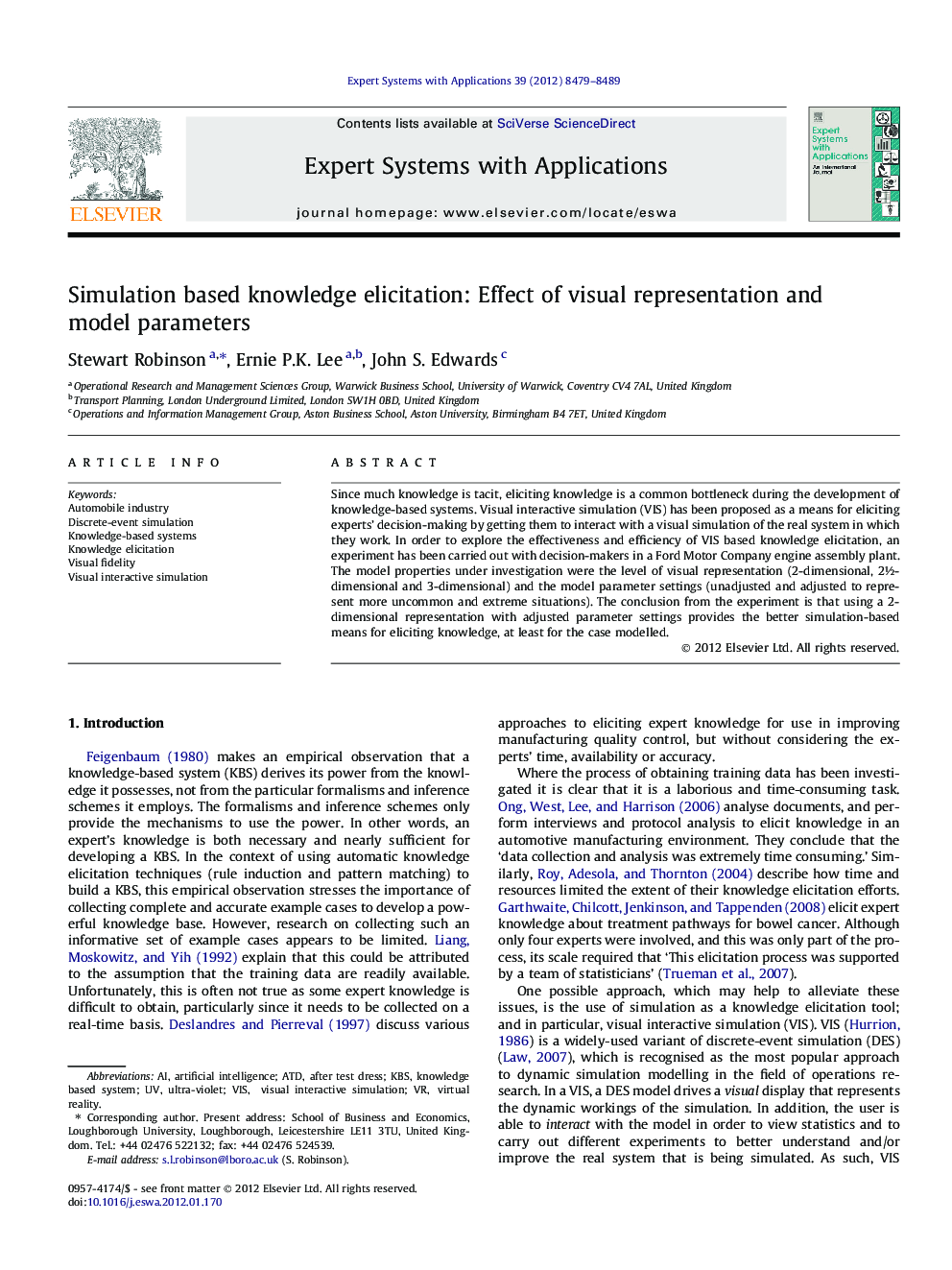| Article ID | Journal | Published Year | Pages | File Type |
|---|---|---|---|---|
| 384184 | Expert Systems with Applications | 2012 | 11 Pages |
Since much knowledge is tacit, eliciting knowledge is a common bottleneck during the development of knowledge-based systems. Visual interactive simulation (VIS) has been proposed as a means for eliciting experts’ decision-making by getting them to interact with a visual simulation of the real system in which they work. In order to explore the effectiveness and efficiency of VIS based knowledge elicitation, an experiment has been carried out with decision-makers in a Ford Motor Company engine assembly plant. The model properties under investigation were the level of visual representation (2-dimensional, 2½-dimensional and 3-dimensional) and the model parameter settings (unadjusted and adjusted to represent more uncommon and extreme situations). The conclusion from the experiment is that using a 2-dimensional representation with adjusted parameter settings provides the better simulation-based means for eliciting knowledge, at least for the case modelled.
► Explores potential of visual interactive simulation as a knowledge elicitation approach. ► Identifies constructs for effectiveness and efficiency of knowledge elicitation. ► Explores impact of visual display level and parameter settings on simulation-based knowledge elicitation. ► Detailed study with real decision-makers in a Ford engine assembly plant. ► Surprising result that 2-dimensional display appears to perform better than 3-dimensional display for knowledge elicitation.
